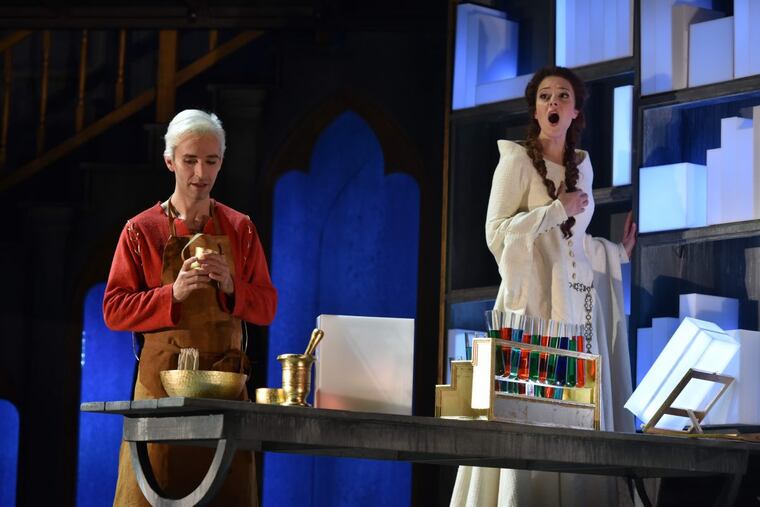Opera Philadelphia's 'Written on Skin' is a new take on a not-so-old opera
What unfolded Friday at the Academy of Music was a red-blooded opera rooted with the visceral appeal of the blood-and-guts I Pagliacci, thanks to director William Kerley and designer Tom Rogers. To me, this was a significant move forward in this opera's still-short history.

New operas sometimes need years to find their legs. Just because the 2012 opera Written on Skin has been widely seen and praised doesn't mean it's too soon for Opera Philadelphia to revise what audiences think about this sophisticated juxtaposition of grisly 13th-century crimes of passion and 21st-century magical realism.
Some viewers immediately adore this British-made musical drama by composer George Benjamin and playwright Martin Crimp, while others wonder if this is another case of two countries divided by the same language. I have long admired the distilled, precisely written score. But what, exactly, does this wrenching story of a rich landowner hiring (and later murdering) a young artist have to say to our day and age?
Previously, the opera received a cool, almost documentary approach: The medieval story took place in one onstage compartment, while the flock of dispassionate angels engineering the bloody story were stationed elsewhere, creating a formal parable-like approach. What unfolded Friday at the Academy of Music was a red-blooded opera rooted with the visceral appeal of the blood-and-guts I Pagliacci, thanks to director William Kerley and designer Tom Rogers. To me, this was a significant move forward in this opera's still-short history.
Characters had more steep emotional arcs here that allowed more immediate audience identification. Several important scene endings fizzled. But so much else worked. Sung by Mark Stone, the rich landowner began with more aristocratic dignity that devolved into tortured anguish (as opposed to the sociopath-from-the-start approach seen in previous productions). His repressed wife, sung by Lauren Snouffer, had a more gradual sexual emergence and opportunities for gracious vocalism. And the artist, referred to as "the Boy," animated the plot rather than simply reacting to it: Instead of just giving in to sexual tension, Anthony Roth Costanzo shed his shirt and dived in.
The set was a revolving cube that broke down into a huge variety of configurations, sometimes with lavishly literal representations of ornate medieval life. The out-of-time angels wore platinum hair and black modern clothes. Oversize furniture dwarfed characters when appropriate. Color and light were used with great theatrical sophistication.
Of course, such virtues are still no guarantee that audiences will take to an opera that challenges listeners in every way. But the score's sprawling succession of exotic sounds felt much more purposeful than ever before. Some have compared Benjamin's music to an atonal Pelléas et Mélisande. I heard Stravinsky's neo-antique ballet Agon bumping heads with Schoenberg's expressionistic Erwartung with the searing effects of Bernard Herrmann's film score to Psycho – though with a mystical melding that's Benjamin's own.
Music director Corrado Rovaris was at his best here, no doubt inducing the cast to sing in the lyrical spirit of a 19th-century Italian opera that can't be expected in an often-atonal score, and finding more vivid colors in the orchestration than I've heard in my many encounters with this opera on CD, DVD, and in live theater.
The question of what the whole operatic package tells us, though, remains open. Obviously, Written on Skin says that cruelty and violence are innate parts of human nature that roar out even amid efforts to keep them at bay. But we know that, don't we?